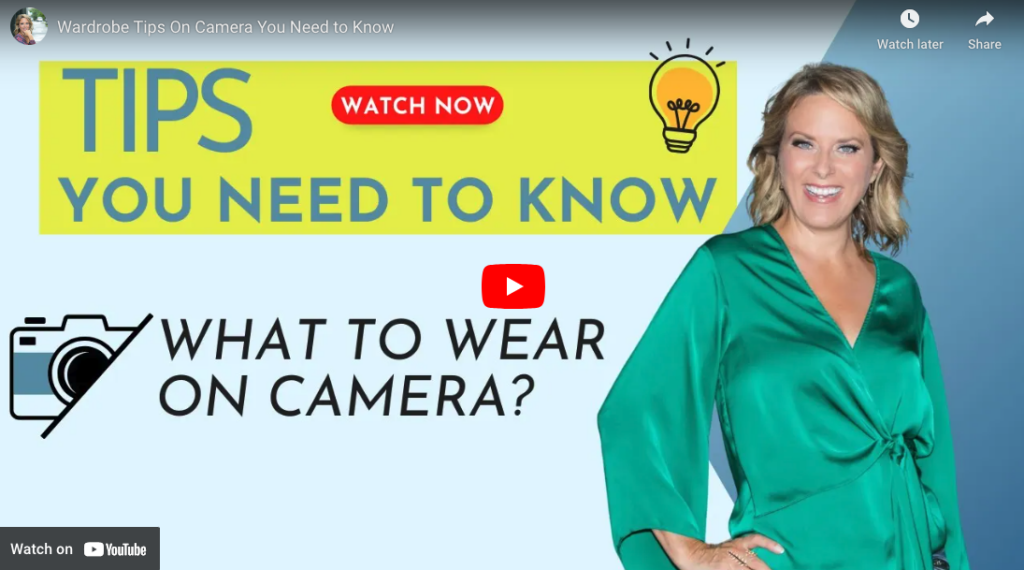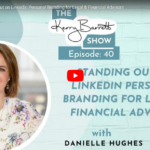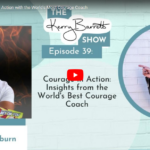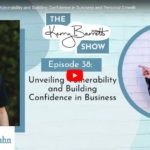
Are you looking to up your on-camera presence? In this episode, I dive into the dos and don’ts of wardrobe for on camera appearances. As a former news industry professional, I know firsthand the impact that wardrobe can have on your on-screen presence.
Transcript
If you feel like you never look your best when you’re showing up on camera or through the lens, this video is for you.
Wardrobe.
It sounds like it’s a really basic thing, but when I tell you that when I worked in the news industry, we had teams of stylists and wardrobe specialists. Because even with a professional set and a professional lighting and a fully set up Studio wardrobe was still an issue.
And let me tell you, if the viewers didn’t like what you were wearing, They were more than happy to let you know in no uncertain terms. It’s probably one of the biggest complaints that any news organization gets when outside of political coverage, when the viewers are complaining about their on air talent. What is she wearing? Why does he look like that? Oh my gosh. That’s flattering because we are superficial and visual creatures.And there are some items of clothing that work wonderfully in person.
However, on air, they are a no go. Now you will see me in some videos in this particular setting where I am wearing items of clothing that counter some of the rules that I’m going to share with you now. But that’s because I know my lighting. I know my coloring very well. I know my background, and I’ve been doing this now for 25 years.
So I have a fairly good idea of what works. If I’m going to be recording a video or hearing through the lens in some capacity, in a studio or environment that I am unfamiliar with, I follow these rules:
1. No small patterns. Small patterns, while they look good in person on camera or through a lens can do all sorts of crazy stuff. Remember that when you’re in this little box, The field of vision and the focus for your audience is incredibly limited, And it is hyper focused.
Despite everything that can be distracting them around you, when they’re focused on you, there is a very narrow scope of vision. And because of that, they can be hyper aware and hyper focused on things that they would perhaps never even notice in person, and one of those things are patterns. Not only can they dance and sort of moray in front of the camera, supplies to herringbone, paisley, small stripes, small polka dots. They can also, just because of the way they fit on us, Stretch. And so they look asymmetrical and sort of oddly placed when they hit certain parts of our body. So any sort of small pattern is out unless you know your lighting very, very well.
2. The second thing is no white and black. White will make a bad lighting situation worse. And if your lighting isn’t pristine and there is darkness behind you, The iris will open up for the darkness in your camera, and it will absolutely blow you out when you’re in something that’s light. And this applies to not just perfect pristine white, it also applies to bone and eggshell and all of those other colors are in that color category or part of that color wheel, so avoid white.
This also applies to black. Although black has the opposite effect. It will still make a bad lighting situation worse, but black sucks all of the light out of us. So we’re a little bit tired or a little bit not feeling as good as we normally do or would like to. It will highlight all of that stuff in our skin. Aside from that, although black is very flattering in person, and that’s why a lot of us, especially here in the northeast, have an entire closet full of black. On camera, black makes it very difficult to see the lines of our body. So it’s that classic saying, you’re not wearing the clothes, the clothes are wearing you. And although black is slimming in person, on camera, It can make you look like a big blob, if you will. So black and white are 2 colors to avoid.
Red is a color that it’s best to avoid if you can. Red works in some situations very, very well. If you have a ready complexion or you That pink undertone in your skin, it can exacerbate that and make it look a little bit worse. Yes. It’s something that can be countered with makeup. However, you’re just adding to your pre production schedule if you have to account for that. The other thing about RED is depending on the level of camera you’re in front of, it can bleed if you will. It’s called chroma buzz.
That’s a news word, but it can actually bleed. It sort of runs outside of the lines of your clothing. And in fact, you can see an image of that happening right here. Now it doesn’t happen all the time, but, again, if you are unfamiliar with where you’re going to be shooting or what you’re going to be in front of, red is another color that’s best to avoid.
3. Opt for blue and avoid green. Brand colors are a great chance for you to highlight the visual branding of you or your business. But if you are unsure, if you are ever in doubt, blue is universally flattering. There is not a shade of blue that won’t work on you. And if you’re planning on a traditional media opportunity, you’re going to be in a studio recording something for a major news network or a cable outlet.
You might not know if they plan on having you in front of a green screen. Avoid green if you’re going to be going into a newsroom or a new studio. If you have additional questions or you’d like to set up an on camera confidence strategy call, you can find the information to do that in the comments below.




